Towards
The encounter is characterized by the uncertainty of the tactical situation and the abundance of accidents, the high dynamism of the development of the situation, the importance of such a factor as time - after all, it is necessary to gain time to preempt the enemy in deploying and capturing the intended milestone.
Therefore, the most important success factors in a head-on battle are effective actions by commanders, who can not only make competent decisions, but also do so as quickly as possible in an ever-changing environment.
The First World War began with a collision of large masses of troops — there were not so many encounters in any of the wars of the past. The conditions for the oncoming fights were varied, but the characteristic feature of most of them was that they represented a clash of opponents on the march.
The desire to act only offensively led to the fact that the troops of the parties, directed by the command towards each other, inevitably entered into numerous counter-battles.
To the credit of the Russian army, she won counter battles of any difficulty level.
Thus, on August 4 of 1914, a battle took place near Stallupenen - a head-on battle of the German 1-th army and Russian 3-th army corps. Starting unfavorably for the Russians (the hitch and temporary withdrawal of units of the 27 Infantry Division - first of all the 105 Infantry Regiment of Orenburg), the battle ended in the defeat of the Germans who had retreated to Gumbinnen.
The standard of oncoming battle is the Gumbinnen battle of 7 in August 1914.
This is a head-on bout with an attempt to reach the German 20 Russian Army Corps. The main blow was delivered by the German 17 and 1 army corps. The 20 Army Corps withstood the blow and counterattacked. The Russian counter-strike caused a panic in the German 1 Army Corps - the right flank of this compound began to retreat in disarray. At this point, the German 17 Army Corps was also defeated: he was caught in a fire bag by the Russian 3 Army Corps and, having suffered heavy losses, also retreated. 1 and 17 army corps lost up to 30% of its composition.
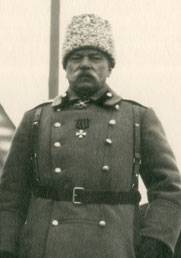
1. The commander of the 20 Army Corps is General of Infantry V.V. Smirnov.
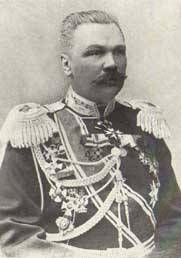
2. The commander of the 3 Army Corps, General of Infantry N. A. Epanchin.
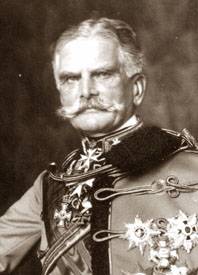
3. The commander of the 17 Army Corps, General cavalry A. von Mackensen.
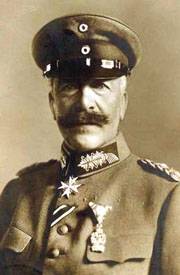
4. The commander of the 1 Army Corps is Lieutenant-General G. von Francois.
By the beginning of the battle, the Germans had the advantage in the number of infantry (1,3 to 1), in machine guns (1,5 to 1), in artillery (1,7 to 1).
To get ahead of the enemy in capturing the optimal lines, the 7 of August, the avant-garde division of the 3 Army Corps — the 27 Infantry — received an order to perform the 5-kilometer march maneuver. The division commander, having received intelligence information about the movement of the German 36 Infantry Division, decided to preempt the Germans in deployment, first to take up defense and inflict casualties on the enemy infantry with the available fire weapons.
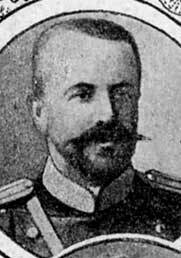
5. The commander of the 27 Infantry Division, Lieutenant General A.-K.-M. M. Adaridi.
6. German infantry on the march.
7. Russian rifle chain. East Prussia, 1914
At the same time, the command of the German 36 Infantry Division, not having received the necessary intelligence about their enemy, the withdrawal of the advanced Russian units took the retreat.
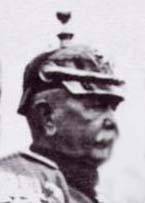
8. The chief of the 36 Infantry Division, Lieutenant General K. von Heinekius.
Seeing the tactical nonchalance of the German command, the commander of the 108 Infantry Regiment of Saratov, letting the enemy take a half thousand steps, ordered the three artillery batteries that supported his unit to open fire. And the German infantry began to unfold in order of battle under the deadly fire of Russian artillery, while the German artillery could only fire on the squares.
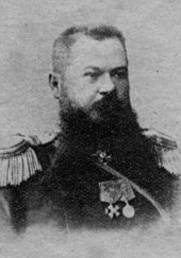
9. The commander of the 108 Infantry Regiment of Saratov, Colonel O. O. Strushevich.
German infantrymen attacked with thick chains, without applying to the terrain and samokapyvaniya. The fire of the Russian artillery made the advancing lie down. When the Germans attempted to move forward nevertheless, then at a distance of a thousand steps from the positions of the Russian infantry, machine gunners and gunners opened fire on them. Enemy infantrymen lay in 800 steps from the chains of the Russian infantry. The German infantry suffered heavy losses and rushed back.
The Germans decided to strike north - by the forces of the 35 Infantry Division. Again, attacking along the same lines, the German infantry, having suffered heavy losses, was thrown back. In this case, despite the fact that the presence of convenient approaches (ravine) to the Russian position helped the Germans to accumulate their infantry to attack, it was repelled by the Orenburg 105 infantry regiment, which, after letting the enemy go to their trenches, went to the bayonet counterattack. Unable to withstand the Russian bayonet strike, the German infantry fled.
Finally, in the 14 hours of 50 minutes, the command of the 36 Infantry Division tried to knock the Russians out of the position for the last time by attacking the 108 th regiment again. This time the attack of the German infantry was supported by artillery battalion fire, which took an open position at a distance of 1200 steps from parts of the 108 regiment. The German artillery division managed to give only a sighting shot, as the fire of Russian batteries was destroyed and completely destroyed. This circumstance so dismally affected the German infantry, that under the fire of the Russian infantry and artillery it rushed back.
As a result, having beaten off three German attacks, the 27-I Infantry Division launched an offensive.
During this oncoming battle, more than 2 thousand German soldiers died and over 1 thousand were captured. The Russian division captured 12 guns, 3 serviceable and 10 broken machine guns, more than 2,5 thousand rifles [Adaridi K.M. 27th Infantry Division in the battle of Stallupenen and in the battle of Gumbinen // Militaryhistorical messenger. Paris. 1964. No 24. S. 11]. Thus, the Russian infantry division, which had less artillery than the enemy, emerged victorious in the oncoming battle. On the same day, the other divisions of the German 8th Army corps were also defeated in the oncoming battles. The German 35th and 36th Infantry Divisions, having lost their moral stamina and causing panic in the rear, retreated beyond the river. Angerap.
10. Head-on 27 Infantry Division 7 August 1914
The fighting in the Augustus Forests in September 1914 was a counter clash, complicated by specific terrain conditions. Sudden clashes of enemy troops, mutual rounds and coverage led to heavy losses. Thus, the battalion of the 12 th Finnish Infantry Regiment, which, together with the regimental machine-gun command, was moving towards Suwalki, discovered a large German infantry unit going unguided along the highway from Suwalki. Then the head of the Finnish machine-gun team, placing their machine guns on the sides of the Avgustovo-Suwalki highway, disguised them. Having let the German column at a direct shot distance, machine gunners with 8 machine guns destroyed it in a minute. So it remained to lie on the highway column of the dead of several hundred people.
Many different in form and content of collisions occurred on the South-Western Front. Some of them were lost due to poor use of artillery, unsuccessful organization of the march, poor organization of security, intelligence, communications, and other reasons.
Thus, in August, 1914, during the battle of Krasnik, the counter-operation of the Russian 4 and Austrian 1 armies, was an adversary, using aerial reconnaissance, establishing the vulnerability of the open right flank of the Russian army. To this end, the Austrians concentrated on the 30-km front 5,5 infantry and cavalry divisions (1-th army and part of the 5-th army corps). They were opposed by the Russian 2,5 infantry divisions of the 14 Army Corps. The rest of the (40-kilometer) front of the Austrian 1 Army was concentrated on the rest of the 4,5 infantry and cavalry divisions — they were to pin down the main forces of the Russian 4 Army. As a result, in the three-day battle under Krasnik from 10 to 12 in August, three Russian corps, primarily due to the lack of interaction between them, were successively defeated by the Austrians.
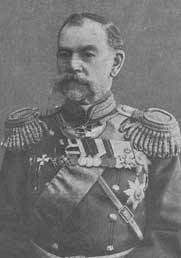
11. The commander of the 4 Army General of Infantry Baron A. E. von Zalc.
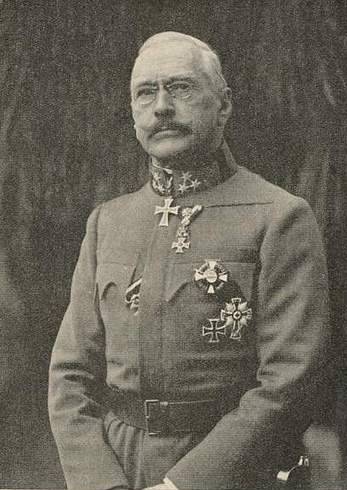
12. The commander of the 1 Army, cavalry general V. Dunkl.
The grouping of forces operating south of the Russian 5 Army, with which it entered into a counter Tomashevsky operation, was characterized by a stretched 100-km front of its five corps. This uniform and, accordingly, weak distribution of forces, as well as the duality of the army’s task (to help both neighbors) quickly led to a crisis on its flanks. The lack of interaction between the neighboring corps led to the fact that the Russian 25-th Army Corps, despite the fact that on August X its 14-Infantry Division defeated the Austrian 70-Infantry Division, could not develop its success due to the outbreak of the existing north of the Grenadier Corps. This exposed the right flank of the 45 Army Corps and also led to its withdrawal. In turn, the withdrawal of the 25 Army Corps widened the gap with its southern neighbor - the 25 Army Corps - to 19 km. As a result, by the evening of the second day, the operations of the 25 Army Corps were shackled by battles in three groups, isolated from each other by significant terrain intervals. And only the steadfastness of the central - 5 army - corps and the regrouping of the troops of the 19 army allowed to gradually stabilize the situation.
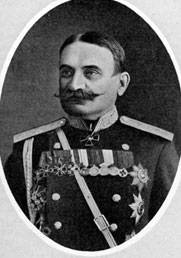
13. The commander of the 5-th Army, cavalry general P. A. Plehve.
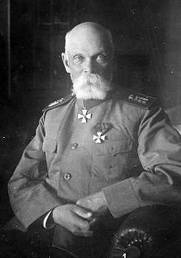
14. The commander of the 19 Army Corps is General of Infantry VN Gorbatovsky.
15. The battles of Krasnik and Tomashev. The position of the sides of the 13-14 August (on the map - the new style).
And on August 13, 1914, also during the Battle of Galicia between the Russian 5 infantry and Austrian 22 infantry divisions, was fought at Zolochivskiy heights. The success of the Russian troops brought the rapid and decisive deployment and introduction into the battle of all artillery means, the rapid seizure of initiative, vigorous infantry actions, maneuvering on the flanks of the enemy. Particularly indicative were the energetic actions of the command of the Russian 5 Infantry Division.
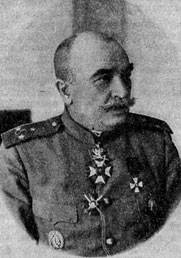
16. The commander of the 5 Infantry Division is Lieutenant-General P. A. Parchevsky.
As a result, just an hour after the start of the battle, the enemy’s avant-garde was constrained, after three hours the main forces of the Austrians went over to the defenses, and after six hours the battle ended in a Russian victory. The time factor was of the utmost importance - this concerned both the deployment of forces and the introduction of fire weapons into battle. The Austrian avant-garde artillery opened fire on 40 minutes later than the Russian artillery - while the avant-garde infantry was already pinned to the ground with a disastrous fire from the distance of 1200 steps. The artillery of the main enemy forces opened fire even later.
17. Russian infantry in Galicia.
18. Austrian field battery in battle.
Combat practice has confirmed that the conditions for the oncoming battle can be very diverse. So, on October 24 of 1914 in the North-Western Front, as a result of an unexpected counter-attack by the enemy, there was a head-on battle between the advancing Russian units and the departing German units. And on November 10, 1914, during the Lodz operation, a head-on battle broke out between the 6 th Siberian Rifle Division, which had the task of completing the surroundings of the German group of infantry general R. Brezdin, and the infantry of this group, which was trying to break through from the environment.
The Russian army won complex strategic operations, consisting of a series of oncoming battles. Especially vivid examples are the Galician, Warsaw-Ivangorod and Carpathian battles.
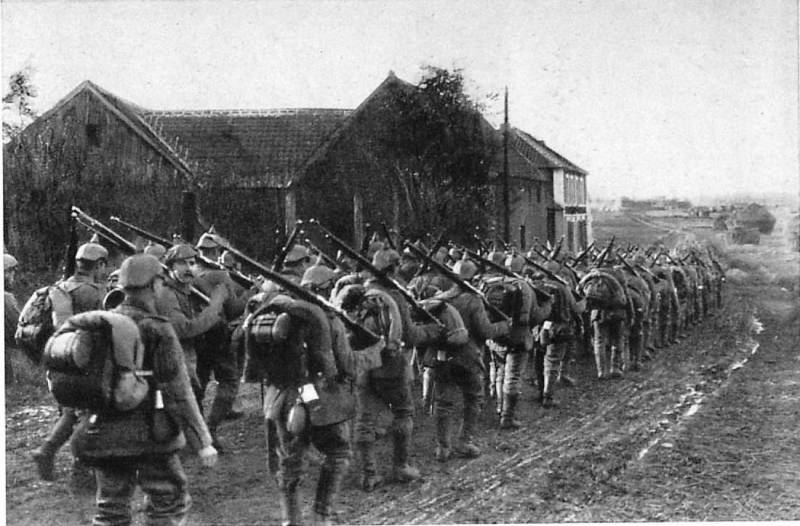
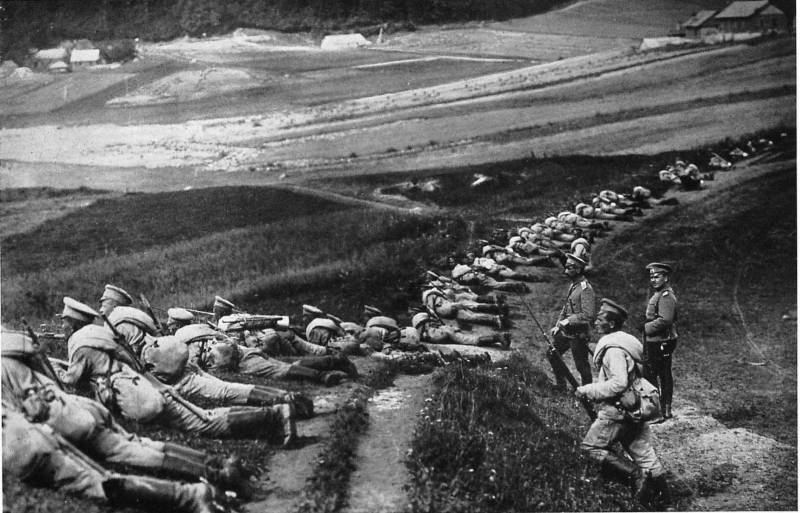
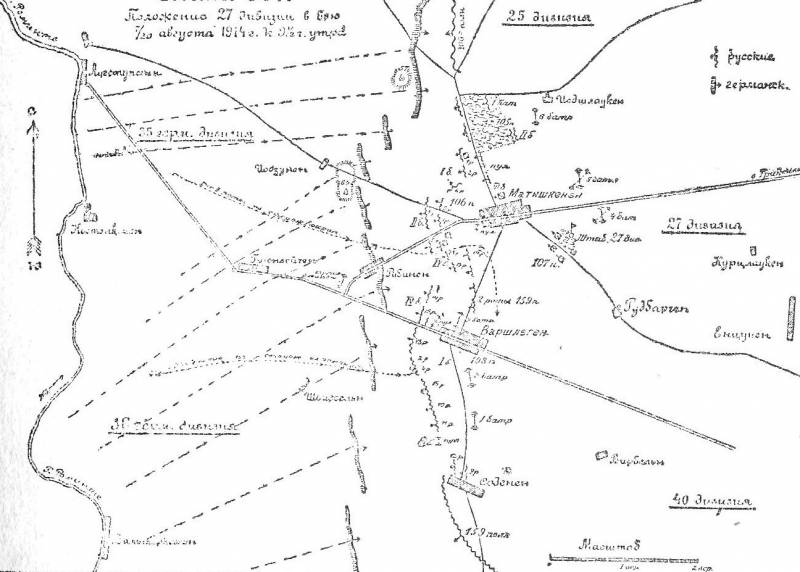
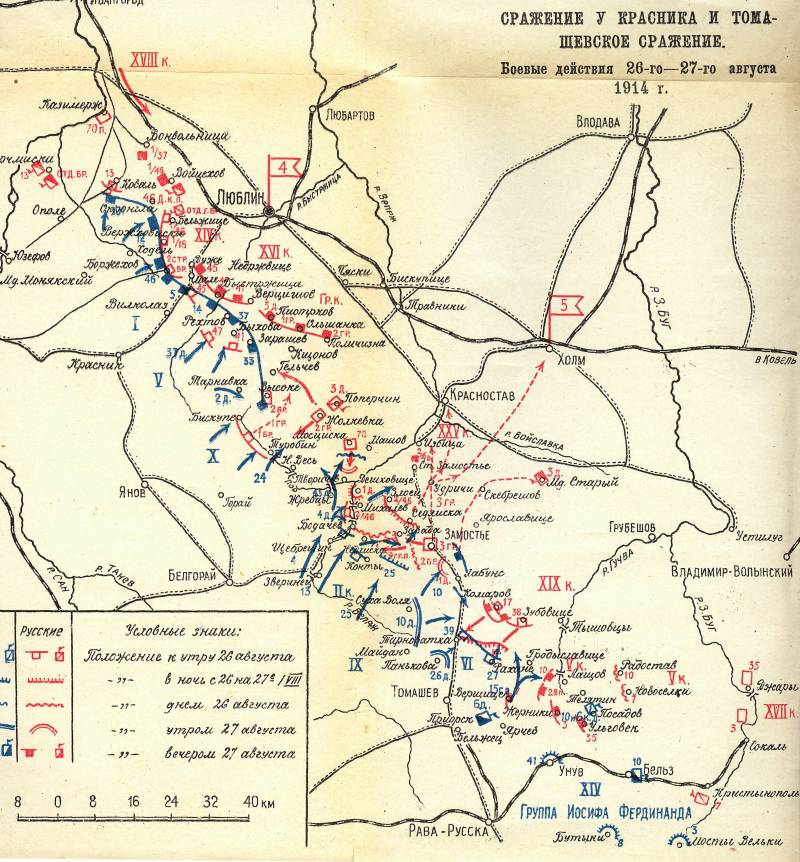
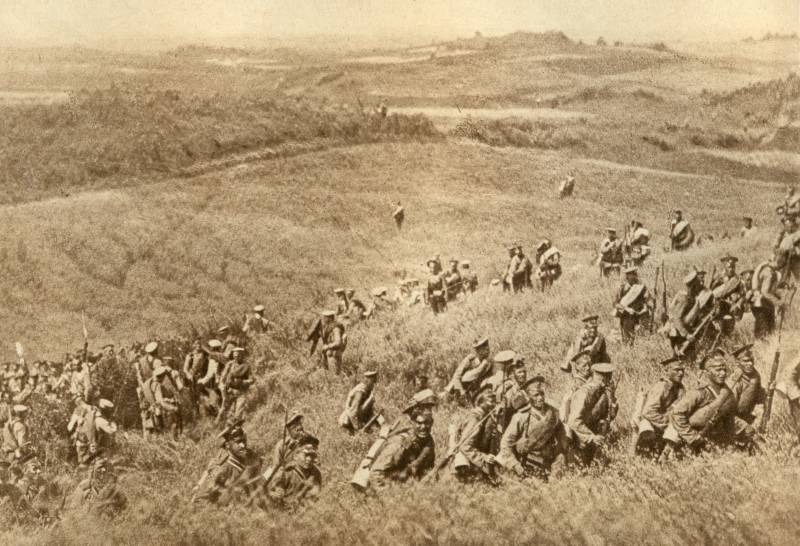
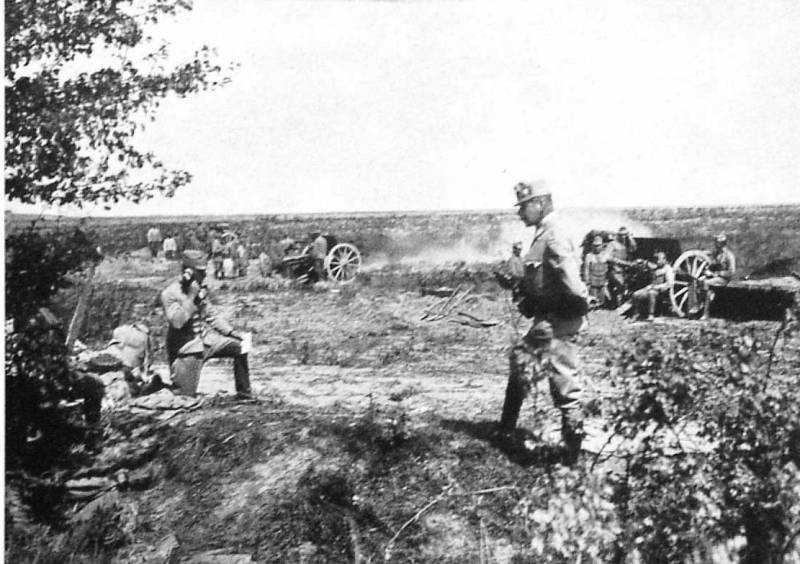
Information